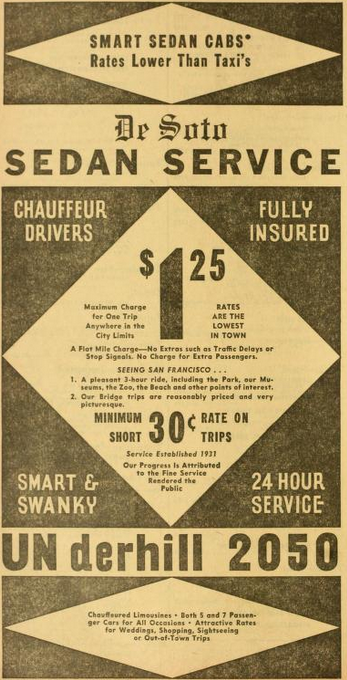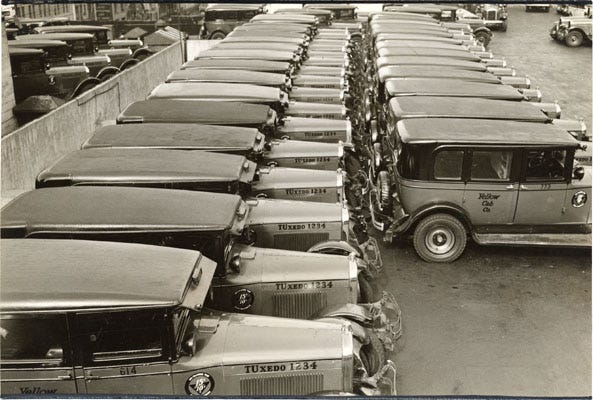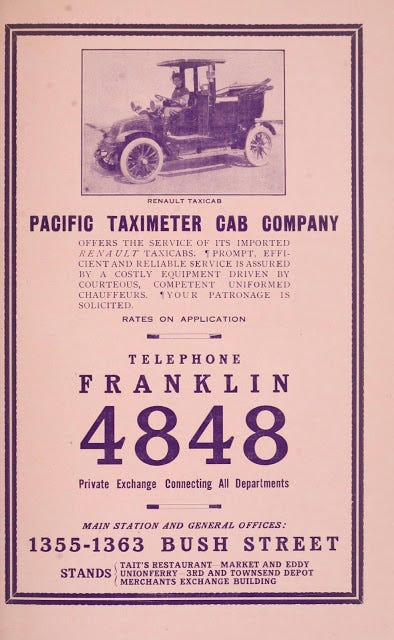
Not too long ago, new, improved Uber CEO Dara Khosrowshahi bemoaned his company’s massive hemorrhaging of cash and vowed to “get the love back” and restore Uber as a beloved brand. As an Uber/Lyft driver, all I can say is good f—ing luck with that. Here’s a news flash: Uber is bound to fail. And so is Lyft, Uber’s little sibling with better PR. The sooner we all understand this, the better.
Uber calls itself a “technology” company instead of a taxi company. This is because unlike a traditional cab company, for which you use your phone to call for a cab, you use your phone to call for a cab. See? The difference is obvious. Uber/Lyft’s business model is to lose money for years or decades to grow its market and then, suddenly, replace all its human drivers with robots. And then we’ll all be rich, because volume. How’s that working for you, fellas? Oh, Uber has lost more money than any start-up in human history? What? How can this be?! Uber makes so much money! Look at all the Uber/Lyft cars clogging our streets! We use it so much! How could it not be profitable?
Uber’s rates in most of the USA are less than $1 a mile and 10 cents a minute. How long ago were taximeter rates that low?
The short answer is that they don’t charge enough. Uber’s rates in most of the USA are less than $1 a mile and 10 cents a minute. How long ago were taximeter rates that low? Well, that depends if you want to correct for inflation or not. For New York City taxi rates (which are roughly similar to SF’s) to get that low in non-adjusted dollars, you’d have to set your way-back machine to 1980, when you could rent a three-bedroom apartment for under $500 a month. In Nob Hill.

Correct for inflation, and you’d have to go back to…well, an alternate reality, because regulated taximeter rates have probably never been so low in the USA. Go back to the Great Depression, when SF meter rates were 30 cents a mile — that’s $4.68 adjusting for inflation per the US Bureau of Labor Statistics. How can Uber/Lyft make money charging 20 percent of that?
So how are Uber and Lyft still functioning? By looking like successful operations. The companies keep their massive driver presence (and quick, cheap service) by offering large subsidies.
The answer is they can’t. So how are they still functioning? By looking like successful operations. The companies keep their massive driver presence (and quick, cheap service) by offering large subsidies. I won’t tell you what I made in 2017, ’cuz a lady has to have her secrets, but more than a third of it came from incentives, bonuses and referral payments. But that’s not the only place Uber/Lyft are bleeding. Pool, Line, Express and a slew of package deals and other programs chop the cost of rides by 80 percent or more, spurring demand and gobbling up transit riders, cyclists, roller skaters and even pedestrians. Do you really think your Uber driver would happily schlep you from the ballpark to your post-game celebration in the Richmond for $4? Of course not. She’s making the standard rate, plus surge, which is often masked from customers. If you’re a Lyft investor, so sorry: in general, Lyft follows Uber’s pricing and driver-retention strategies almost to the penny.

Uber’s business model is not just flawed; it’s absurd. The taxi industry has been massively regulated for decades in the United States. Not because we live in a Marxist hellhole where the state has its finger in everything, but because the industry itself recognized that the only way it could maintain its modest profit margin was to restrict supply by requiring cabs to have government-issued medallions (permits). The strongest supporters of government regulation in the taxi industry have always been the medallion holders. By deregulating taxicabs, Uber has eliminated the exact mechanism that keeps it profitable. It’s like lions chasing away all the gazelles and then bragging about how they “streamlined” the Savannah.
But, but, but you say, they’ve been working on autonomous vehicles (AVs) for years, and not only do I see them driving all over SF and Silicon Valley, but I constantly see stories about how car companies are planning on rolling out AVs in the next few years. Once Uber/Lyft doesn’t have to pay drivers, the rates will be profitable, and we’ll all have a happy, sustainable future riding to pitch meetings for pennies a mile.

Yeah, no. Here’s why autonomous vehicles are at best 15 years away. For AVs to replace cranky, swarthy middle-aged men like me en masse, they have to be cheap, widely accepted by the public and 100 percent legal in most US jurisdictions. Why cheap? Because Uber/Lyft cars need to be everywhere, all the time, no more than three to five minutes from most customers.
Let’s say that means something like 500,000 to a million cars (and drivers) across the country. At $100,000 per AV (which is what they would likely cost at first), that’s a 50-to-100-billion-dollar investment—too much money for even Uber to finance. Instead, Uber would likely continue its current business model, whereby it doesn’t actually own any vehicles but instead counts on suckers like me to lease or purchase them. But we little guys wouldn’t make enough money to pay a $100,000 loan on an AV while also maintaining, insuring and repairing it. No, we’d have to wait till the price of AV tech is just a small premium over “dumb” cars. That’s not happening anytime soon, unless there’s massive economy of scale or a government mandate requiring it.
The second barrier is acceptance by the public. Would you, dear reader, feel comfortable in a driverless car in SF traffic? No? That’s the answer I get most frequently from my passengers, and two-thirds of Americans agree. Of course, that number will change, but it’s a chicken-and-egg thing that will take time, and only if AVs are far safer than human drivers (which is, admittedly, a low bar). All it will take is a fatal accident every few news cycles, like the recent one involving a woman who was struck and killed by a self-driving Uber car in Arizona, to slow that perception, regardless of how many humans are at fault.
Finally, the gubb’mint has to be onboard as well. Who’s at fault when somebody gets hurt? Who gets a ticket when a self-driving BMW makes a left turn from the center lane, because you know self-driving BMWs will be programmed to be self-entitled assholes? Do you really think all 50 DMVs as well as the federal DOT and other agencies will fall all over themselves to legalize AVs and put as much as 5 percent of the workforce out of a job? Regulation will follow demand, but demand won’t grow until regulation…and yadda yadda. I’m not saying it won’t happen; I’m just saying it won’t happen anytime soon.
And even if autonomous vehicles are eventually cheap, accepted and legal, without artificial restriction of supply, what will prevent competitors from just undercutting Uber by a penny per mile until nobody is making bupkis?
And even if AVs are cheap, accepted and legal, without artificial restriction of supply, what will prevent competitors from just undercutting Uber by a penny per mile until nobody is making bupkis? What then, investors? Rely on brand loyalty? Because everybody loves Uber so much.

Uber/Lyft are heading down a one-way, dead-end ally, and they’ve known it from day 1. To distract us (and themselves), they spend big money on very public AV development (including helicopter drones, allegedly just two years away) so their investors keep investing. In olden times, fraudulently raising money to keep an impossible business model afloat was called a Ponzi scheme. Now it’s just having “vision.”
The good news for Khosrowshahi et al. is that most passengers don’t GAF. They just want to get from point A to B quickly, reliably and cheaply. The bad news is that the perception of the public and investors can change very quickly. What then? Bankruptcy will mean no incentives and no bonuses, and welfare will net more income than driving for Uber. That will mean rates will have to go up, and ridership will decline—a vicious cycle. We’ll be left with the bottom feeders: disgruntled, cranky, dangerous drivers in ancient, smelly hoopties. Ironically, this will lead to regulation—permits, licensing and other controls that will probably result in what we had pre-Uber/Lyft, but with more medallions and the advantages of smartphone dispatching.
Mr. Khosrowshahi has a choice. He can continue the flimflam show his predecessor started, or he can focus on creating a sustainable business model. This will likely involve raising fares to an amount that accurately reflects the human and material cost of operating a taxicab company. He’ll have to admit that driverless cars aren’t just around the corner and that caring about your workers is the best way to build a profitable service that people feel good about using.
Gabe Ets-Hokin is an Uber/Lyft driver and freelance writer. A San Francisco native, he studied transportation issues in college and worked as a taxi driver for seven years. Nobody knows the transportation industry in San Francisco better than him—believe him.







